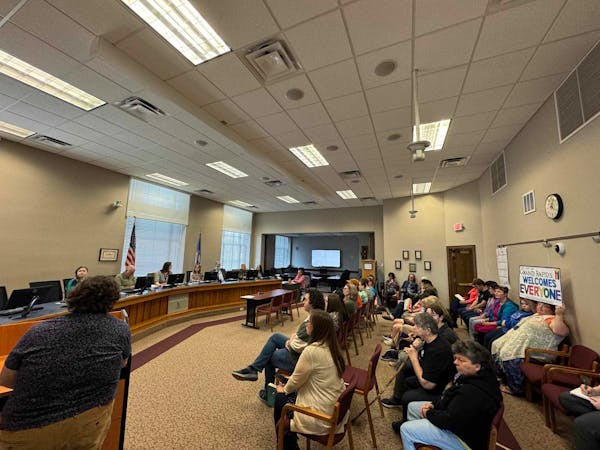It is unlikely that overflight noise from the current multiple departure routes at Minneapolis-St. Paul International Airport would be changed much if the routes were made into narrow highways ("FAA pulls plug on compromise takeoff plan," Feb. 20). However, that does not make the proposed strategy desirable. More noise and pollution per flight, automated or not, is neither needed nor healthy.
In southwest Minneapolis, more noise intensity per departure resulted from procedural changes and from lower rates of climb, not from "more precise" instrument routes. The proposed routes were not — are not — in use. That was not the change.
Southwest neighborhoods are complaining about more noise per flight and noticing more flights because the flights are lower and louder than in 2010.
East of Chicago Avenue, neighborhoods are complaining about the steep increase in daily overflights. The creation of more departure headings changed flight patterns in 2011, and changes in runway use in 2012 combined to "spread the noise around" over new neighborhoods. The Federal Aviation Administration changes made noise-abating departure procedures rare, despite the MSP Noise Compatibility Plan agreement to maximize their use.
The FAA bases airport use on an agreement with the airport authority that can include limits on flight noise and routes, but it doesn't at MSP. Let's change that.
Citizens would lose a safety-vs.-noise fight and should instead advocate for restoring noise-abating departure procedures and lower runway-use rates. Fewer departures per hour would be far less noisy and a lot safer than current operations.
That is currently not being considered by the Metropolitan Airports Commission, although the costs of sustaining high hourly capacity are steep and there are more disadvantages than gains. Economically sufficient annual capacity does not require the high peak rates or the substantial capital costs associated with them.
The safety situation at MSP is also a result of too many operations at peak hours. More departure routes and high rates also increase the likelihood of Runway 30R/L departures being in the airspace needed in case of a Runway 35 go-around (an aborted approach or landing). The National Transportation Safety Board issued a warning about this on July 1, 2013.
The FAA is evaluating the safety of the so-called PBN/RNAV routes at MSP, and it is looking at starting some practical tests in mid-2015. That schedule — a two-year slip from the funded schedule — applies because the MAC agreed to be among the first 10 or 12 airports to use the procedures.
Minnesota needs a new FAA-MSP deal. Let's work on that.
Jim Spensley lives in Minneapolis.

Should Metro Mobility even be thought of as supplemental?

What does Anoka-Hennepin really teach about DEI?


